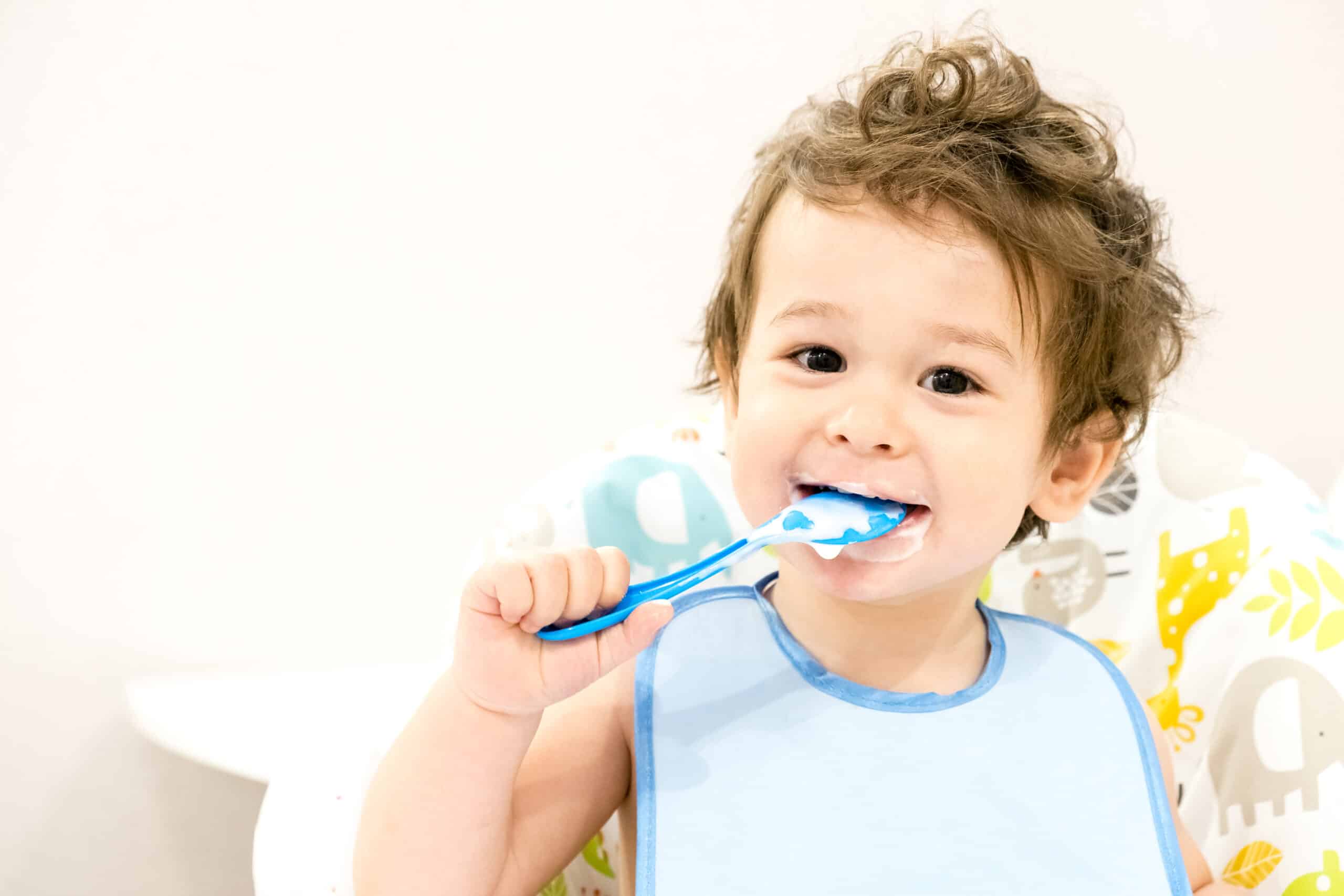It is an awesome moment when a toddler takes their seat at the family table and begins using utensils to feed themselves. There is something so rewarding about seeing your child pick up a fork and spoon and feed themselves with ease, but it won’t happen overnight. However, while every child may reach this milestone a little differently, there is a certain point where they should develop the skill. Today, we will talk about the importance of utensils and ways that you can help your child learn those skills.
Key Points of Toddler's Motor Skills and Feeding Themselves
- A toddler's ability to feed themselves is heavily tied to their motor skills and may prove challenging at first. Be patient and expect some mess or fussiness at first.
- Start with a spoon as it's easier to use and they will be less likely to cause mess or hurt themselves.
- Around the first year mark, toddlers will be able to use a spoon.
- If you notice that your child is struggling with their motor skills, consult your pediatrician.
When Will My Toddler Use Utensils to Feed Themselves?

Your child will learn to use a fork at about 12 months of age.
©komokvm/Shutterstock.com
As the months go by, your toddler will learn how to sit at the table, either in a high chair or in their own “big kid” chair. Soon after that, they should start to learn the skills associated with using their utensils. They will learn these skills in phases. According to the Centers for Disease Control, most toddlers should be able to use a spoon on their own between 10 and 12 months of age.
It is also around this time that your toddler will gain the skills necessary to drink out of a regular cup and hold it with two hands. Forks can be a little more complicated, but most children will get the hang of them around 12 months. However, most will not be skilled with a fork until closer to 24 months of age.
Your child should not handle a knife or other cutlery at this point. Most kids learn to use a knife when they are around 7 years old. This rule applies if you want your child wants to help out in the kitchen while cooking or backing.
Teaching Your Toddler to Use a Spoon
It is important to keep in mind that not every child will have the coordination necessary to use a spoon by their first birthday. Some toddlers may be late bloomers and may not get the hang of it until closer to 15-22 months.
Signs That Your Toddler is Ready for a Spoon
Parents can have confidence that they can start to teach their toddler how to use a spoon if they notice these signs:
- They constantly try to grasp your spoon or fork.
- Your toddler closes their mouth when you try to feed them with your spoon.
- They have mastered the pincer grasp (holding items between thumb and index finger), which is required to hold the spoon.
These skills require a number of things. An understanding of what the tool is used for, control of motor skills, and the ability to keep their mouths closed while eating.
The Importance of Using a Spoon
It is a good thing that your toddler has a desire to feed themselves with utensils. The ability to use tools is an essential part of human development. By learning to use utensils, your toddler will also:
- Improve their ability to grasp items and hold them firmly.
- Gain better hand-eye coordination and other motor skills, which are essential for everyday life.
- Increase sensory skills that will help them to learn the textures of different foods.
Once your child shows eagerness to use a spoon, you can begin to teach them the necessary skills. Make the process easier with these tips:
- Choose foods that are easy to scoop, including mashed potatoes, ricotta cheese, infant cereal, oatmeal, and yogurt.
- Eat all of your meals with your child and use a spoon so they can see the motions that you use, and they will try to replicate them.
- Give your child a spoon to hold with one hand while you feed them with your own spoon. That way, they can connect the concepts and start to learn.
- Provide your toddler with a plastic spoon that will allow them to get a better grip. When they become proficient months down the road, then you may consider moving onto a metal spoon.
- Give your toddler a plastic spoon that they can carry around with them even when they are not eating. This is a good way to get them used to holding it.
- If your child is able to hold the spoon, then you can put some food on it, and they can practice getting the food into their mouth. If they cannot yet hold the spoon, then you can hold it and put the food on it and then put it in their mouth so they can see how it works.
- When your child learns to hold the spoon or feed themselves, give them praise and clap, so they are encouraged to try it again.
Teaching Your Toddler to Use a Fork
Once your child has mastered the spoon, you should consider teaching them how to use a fork. Using a fork requires a bit more finesse, so consider these teaching tips:
- Find a bowl that will attach to the table and not slip. In addition to preventing a mess, your toddler will need to learn how to press the fork down into the food. It is easier to do when the plate or bowl doesn’t move.
- Try to teach your baby how to use their other hand to hold the table or the plate so they can stab the food with the fork hand without it moving.
- Use their fork to show them how to stab down into the food and pick it up so they can see an example of how it should be done.
- Allow them to keep practicing even if they make a mess. Sometimes, it takes trial and error to reach these childhood milestones, and they won’t accomplish them overnight.
- Let your child hold the fork but guide their hand as they scoop up the food and put it in their mouths so they can get used to the motions.
- Encourage them and provide praise when they are able to use the fork correctly.
It is important to use a child-safe and sized fork. Most general-purpose stores and online retailers will baby forks. They will usually be made of rubber, silicone, and plastic so as your child is learning the skills they won't hurt themselves.
Avoiding Messes When Teaching Your Toddler Utensils

Your toddler will likely make a mess when you teach them to use utensils, so use the tips here to keep the space relatively clean.
©Nutlegal Photographer/Shutterstock.com
When you are teaching your toddler to use utensils to feed themselves, it is a good idea to take some precautions to ensure that your kitchen and dining room do not become too messy. Consider the following:
- Take advantage of a bib.
- Cut food into smaller parts, so they are easier to hold.
- Consider giving them smaller portions of all food, so they don’t feel overwhelmed.
- Find a plate that sticks to the table via suction cups so they cannot pick it up and throw it on the ground.
- Put a large cloth or towel under the table to catch the spills.
- Consider giving them a utensil lesson outside.
- If they throw a fit, then they may not be ready to learn today. Consider letting them continue eating with their hands for the time being.
If your toddler is smart enough to pick up the suction cup plate or bowl, you might have to change tactics to get them to feed themselves. Be prepared for a mess no matter what during your first lessons.
Conclusion
Your child will be using utensils to feed themselves sooner than you realize it. Parents should always be around to help their children when they are using utensils and provide guidance when necessary. It is an exciting time, so cherish it and get ready for the many other milestones that lie ahead.
The image featured at the top of this post is ©Yavdat/Shutterstock.com
